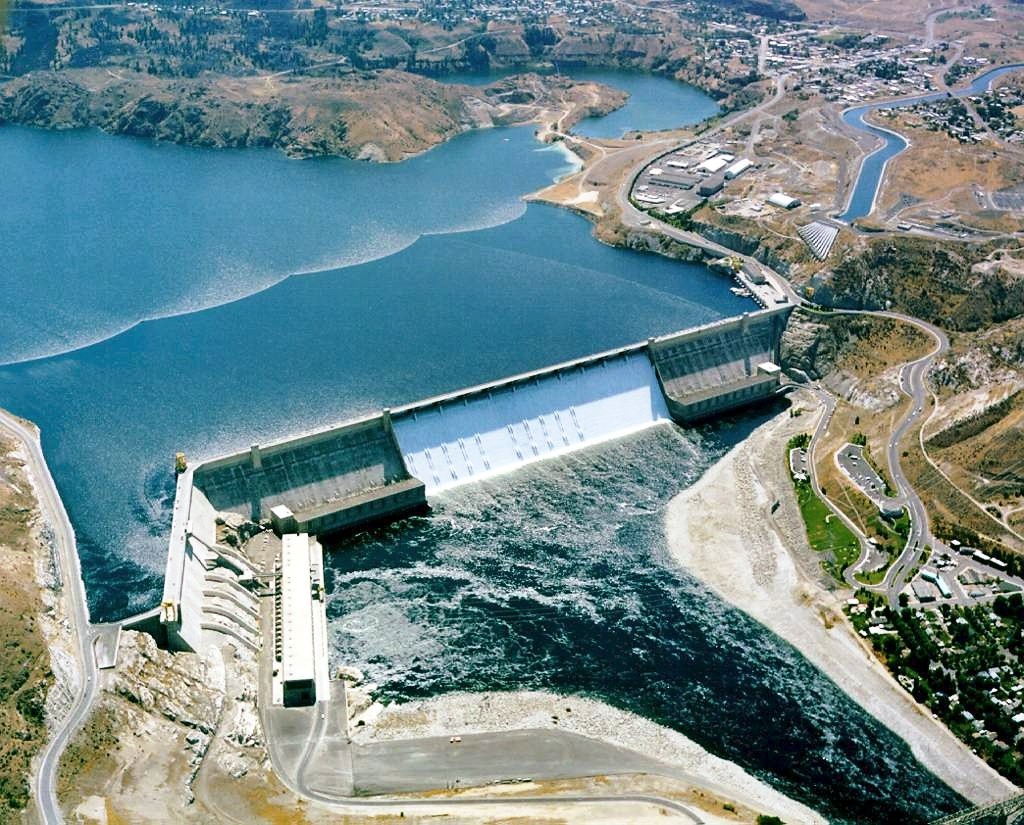 |
| Grand Coulee Dam |
The recent fish kill below Grand Coulee dam has garnered some media attention. We wanted to take a moment to clear up some misconceptions about how this relates to spill for salmon:
A large release of water from Grand Coulee Dam on the upper Columbia River in northern Washington has killed several thousand farmed steelhead trout being raised in net pens in the river. This situation is very different from that of salmon and steelhead in the Columbia River below Grand Coulee, and in the Snake River, where fishing, business and conservation groups are seeking additional beneficial spill to help salmon. The differences make all the difference for fish, people and businesses. Here are a few:
1. There is no passage for migrating salmon at Grand Coulee or the dam below it, Chief Joseph. The dead fish are farmed trout held in net pens near the water surface below the dam, so they are unable to move away from excess dissolved gas or swim deeper to avoid it. Migrating salmon and steelhead that are passing other dams are free-swimming, so both river current and their own survival instinct moves them away from areas of high dissolved gas below dams.
2. The Grand Coulee water releases are not “spill,” despite some stories to the contrary. At Grand Coulee, due to low reservoir levels, water is being released through regulating gates near the bottom of the dam. At Columbia and Snake dams being traversed by salmon, water is being spilled over the top via dam spillways. The Coulee releases through regulating gates that generate higher dissolved gas levels than spill at other dams. This makes a big difference for fish.
3. Dissolved gas levels from the releases at Grand Coulee have been in the range of 130-135% saturation, higher than spill over spillways would normally cause, and exceeding the additional safe spill sought by fishing and conservation groups for salmon and steelhead migrating to the ocean.
4. At Grand Coulee, one farmed fish business is being harmed due to high dissolved gas levels caused by choices dam managers are making in response to high water. Downstream, in lower reaches of the Columbia and the Snake River, hundreds of salmon-based businesses are being helped by the high spring flows we are experiencing, because salmon migrating to the ocean are getting there faster. This does not mean that very high dissolved gas levels caused by dams are good for salmon, but it does mean that, when we plan and carefully manage high water and spill, high flows are mostly good for salmon, and thus for Northwest salmon businesses.
One big thing is the same at Grand Coulee and the dams downstream: high water. Many other things are different, of which we’ve listed just a few. We hope reporters and readers pay close attention to the differences, because it is the differences that matter most to affected people, fish and businesses.

No comments:
Post a Comment